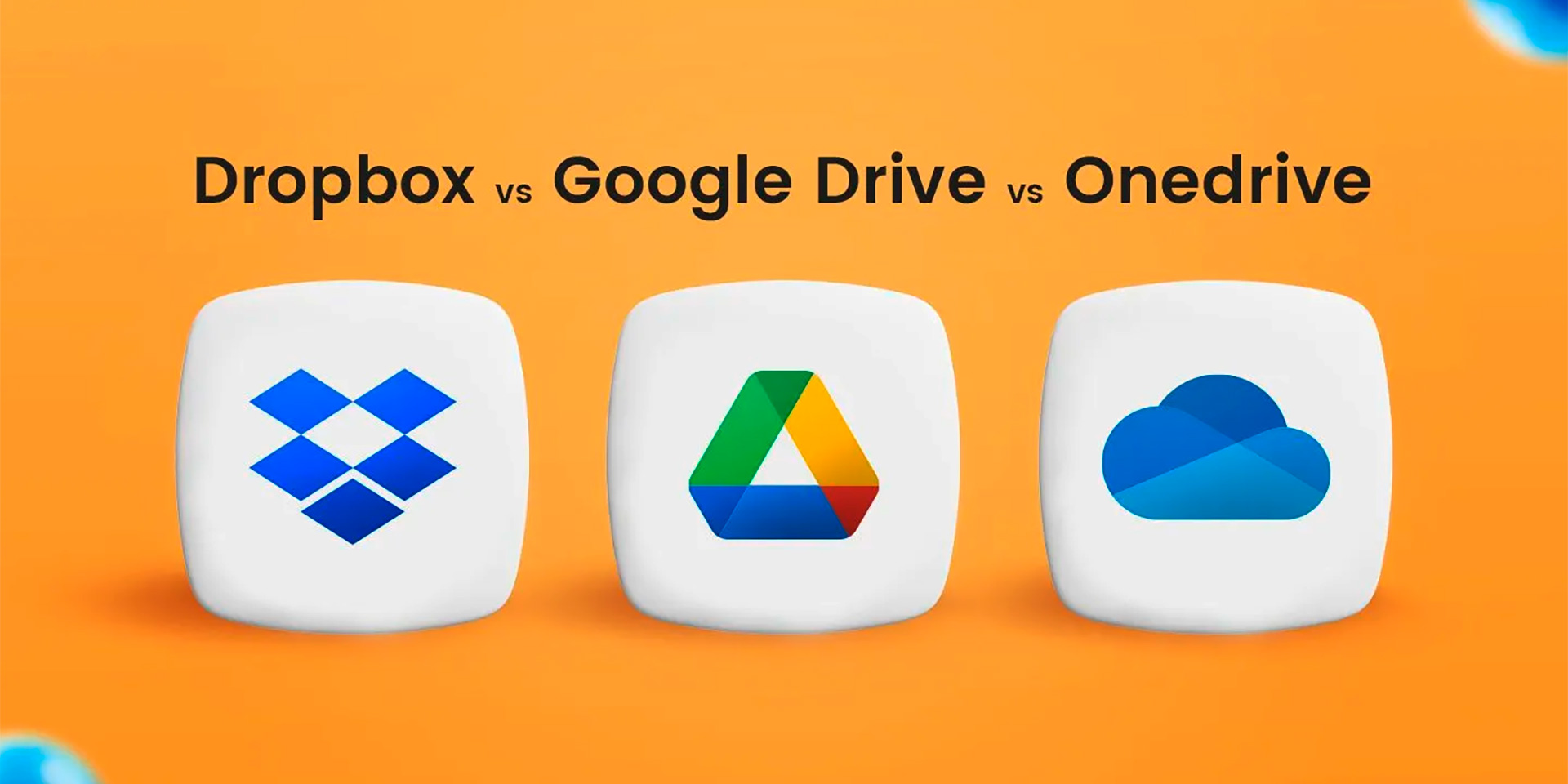
A Unique Comparison of Leading Cloud Storage Services
Cloud storage has revolutionized the way we store and access our data, offering convenience, flexibility, and security. Among the many providers available, Google Drive, Dropbox, and OneDrive stand out as popular choices. In this article, we’ll take a unique approach to comparing these services, focusing on their key features, pricing plans, and storage capacities to help you make an informed decision…
Google Drive: More Than Just Storage
Key Features:
Integration with Google Workspace: Google Drive seamlessly integrates with Google’s suite of productivity tools, including Docs, Sheets, and Slides, allowing for easy collaboration and file sharing.
AI-Powered Search: Google Drive uses AI to help you find files quickly, even if you can’t remember the file name. It can search based on content, file type, and other parameters.
File Versioning: Google Drive automatically saves versions of your files, allowing you to revert to previous versions if needed.
Security: Google Drive offers robust security features, including encryption, two-factor authentication, and granular access controls.
Pricing:
Google Drive offers a free plan with 15 GB of storage. Paid plans start at $1.99 per month for 100 GB of storage and go up to $9.99 per month for 2 TB of storage.
Storage Capacity:
Google Drive offers storage options ranging from 15 GB to 30 TB, making it suitable for individuals and businesses of all sizes.

Dropbox: Simplifying File Management
Key Features:
Smart Sync: Dropbox’s Smart Sync feature allows you to access files stored in the cloud without taking up space on your device, saving storage capacity.
File Recovery: Dropbox offers a file recovery feature that allows you to restore deleted files or previous versions of files within 30 days.
Collaboration Tools: Dropbox includes features like comments, annotations, and file requests to facilitate collaboration among team members.
Security: Dropbox employs advanced security measures, including encryption, two-factor authentication, and file activity tracking.
Pricing:
Dropbox offers a free plan with 2 GB of storage. Paid plans start at $11.99 per month for 2 TB of storage and include additional features like advanced sharing options and priority support.
Storage Capacity:
Dropbox offers storage options ranging from 2 GB to 3 TB, making it suitable for individuals and businesses with varying storage needs.
OneDrive: Integrated with Microsoft 365
Key Features:
Integration with Microsoft 365: OneDrive is tightly integrated with Microsoft 365, providing seamless access to files across devices and collaboration with Office apps.
File Versioning: Like Google Drive, OneDrive offers file versioning, allowing you to restore previous versions of files.
Offline Access: OneDrive allows you to access files offline, making it convenient for users who need to work without an internet connection.
Security: OneDrive offers robust security features, including encryption, ransomware detection, and recovery, and data loss prevention.
Pricing:
OneDrive offers a free plan with 5 GB of storage. Paid plans start at $1.99 per month for 100 GB of storage and go up to $9.99 per month for 2 TB of storage. Microsoft 365 subscription includes 1 TB of OneDrive storage.
Storage Capacity:
OneDrive offers storage options ranging from 5 GB to 6 TB, making it suitable for individuals and businesses with varying storage needs.

Google Drive vs. Dropbox vs. OneDrive
Syncing and Compatibility:
Google Drive: Offers seamless syncing across devices, including desktop, mobile, and web. Compatible with both Android and iOS devices.
Dropbox: Provides excellent syncing capabilities, supporting Windows, macOS, Android, and iOS devices.
OneDrive: Offers seamless syncing across Windows, macOS, Android, and iOS devices, with deep integration into the Windows operating system.
Collaboration Tools:
Google Drive: Excels in collaboration with its suite of Google Workspace apps, allowing real-time editing and commenting.
Dropbox: Offers collaboration features like shared folders, comments, and file requests, but lacks the integrated office suite found in Google Drive.
OneDrive: Integrated with Microsoft 365, providing robust collaboration tools like co-authoring, commenting, and version history.
File Sharing and Permissions:
Google Drive: Allows easy file sharing with customizable permissions, including view, comment, and edit access.
Dropbox: Offers granular control over file sharing, allowing users to set passwords, expiration dates, and access levels.
OneDrive: Provides similar file sharing features with customizable permissions, ensuring secure collaboration.
Additional Features:
Google Drive: Offers a wide range of additional features, including Google Photos integration, advanced search options, and the ability to open and edit Microsoft Office files.
Dropbox: Provides features like Dropbox Paper for collaborative document editing, Dropbox Showcase for presenting files, and Dropbox Transfer for sending large files.
OneDrive: Includes features like Personal Vault for securing sensitive files, OneDrive Personal for accessing files on-the-go, and automatic photo and video backup from mobile devices.
Customer Support:
Google Drive: Offers online help resources, community forums, and email support for paid users.
Dropbox: Provides online help resources, community forums, and email support for all users, with priority support for paid plans.
OneDrive: Offers online help resources, community forums, and email support for all users, with additional support options for Microsoft 365 subscribers.
Conclusion: Finding the Right Fit
Each of these cloud storage services offers unique features and benefits, catering to different user needs and preferences. Google Drive excels in integration and AI-powered search, Dropbox shines in file management and collaboration tools, while OneDrive stands out for its integration with Microsoft 365 and security features. Consider your storage requirements, budget, and preferred features to choose the cloud storage service that best fits your needs.
